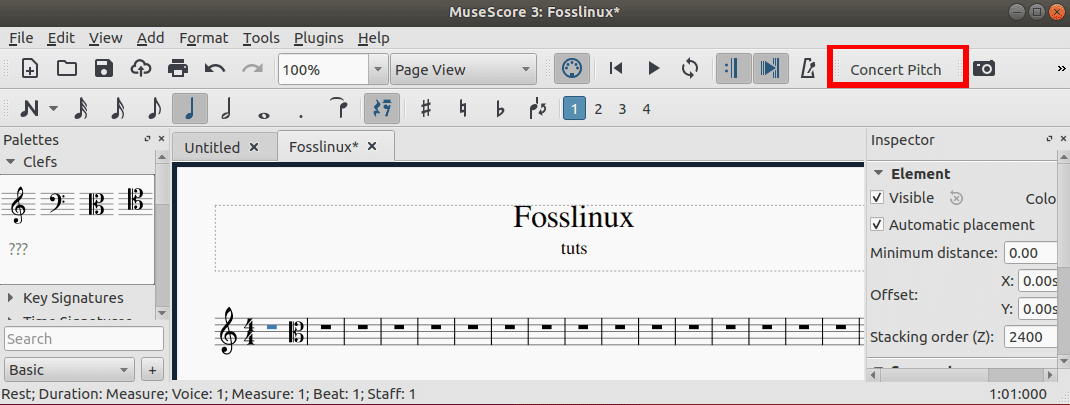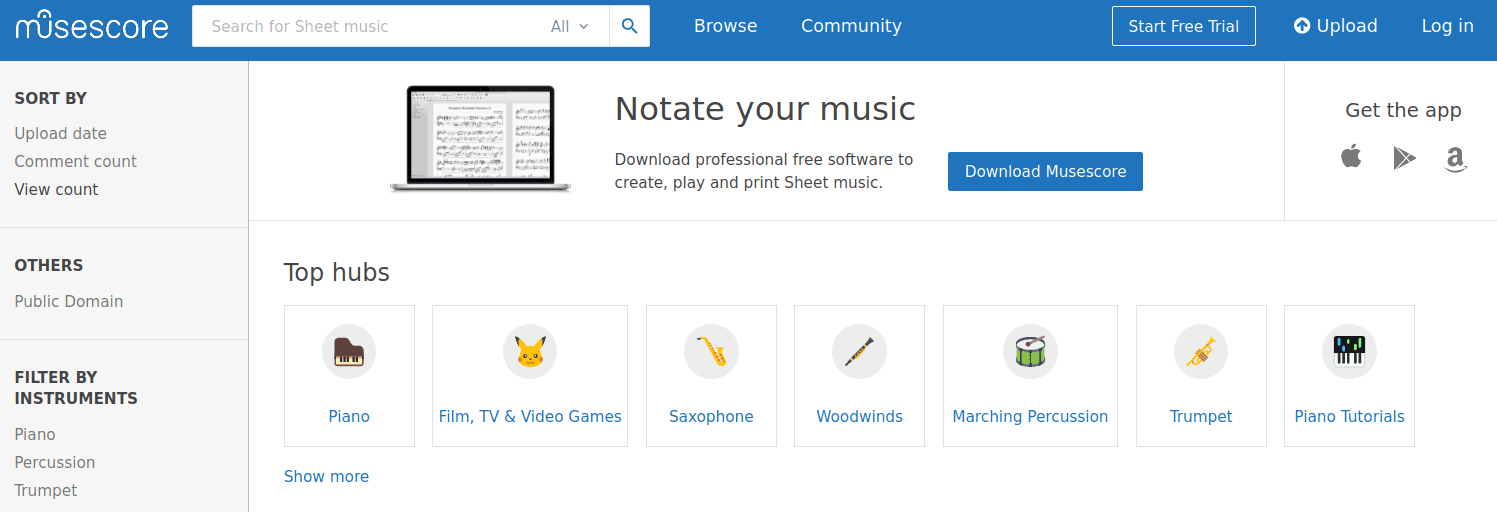Do you need a top-notch musical notation editor for your Linux PC? MuseScore should be the software of your choice. A good music notation app requires to provide the user with features like quick corrections, fast editing, reliable sharing, and provision of a uniform layout of sheet music. It should make the whole process of creating, editing, and printing music a lot easier and fast.
MuseScore is one of the powerful and versatile open-source music score editors for your Linux PC. It might not offer all the editing features provided by high-end paid software, but it provides users with the core functionality needed.
Getting started with MuseScore
MuseScore runs on several platforms like various Linux distros, Windows and macOS. You can download MuseScore from the official website with the link below.
For Ubuntu users, MuseScore is now available via PPA. Ubuntu 18.04 or higher release, follow the steps below.
Installing MuseScore on Ubuntu
Step 1) Open terminal from the applications menu or with keyboard shortcuts Ctrl+Alt+T.
Step 2) Add MuseScore PPA with the command below:
sudo add-apt-repository ppa:mscore-ubuntu/mscore3-stable
Step 3) Update the repository.
sudo apt-get update
Step 4) Install MuseScore3 with the command below:
sudo apt install musescore3

install MuseScore3 Ubuntu
Once the installation is complete, launch MuseScore from the application menu.

Launch MuseScore from the app menu
To remove or uninstall MuseScore from your system, run the command below:
sudo apt remove --autoremove musescore3
Notable Features in MuseScore
Let’s take a look at some of the fantastic features that come along with this score editor.
1. Excellent User Interface (UI)
MuseScore comes with a clean and comfortable to use user interface. Developed using the Python QT library, it is responsive to any device size and very easy to use. The toolbar is located just at the perfect place where you can access all your menu options easily as you work on your score.

MuseScore Work ARea
MuseScore also comes packaged with the metronome feature. In most score editor applications, this feature is reserved for premium subscribers, but with MuseScore, you get it for free. Metronome enables one to add notes to your score and play them on time and in tempo.
2. The Concert Pitch
The concert button enables one to view and access transposed instruments. One can access the B-flat trumpet or tenor sax without performing any transposition. For a piano player or leaner, Concert Pitch is an excellent accessory.

Concert Pitch
Note, always turn off the concert pitch before proceeding to print or exporting your scores.
3. Add-on plugins functionality
One advantage of open-source software is that it is always in development. Every day, we have new features being added. It is the same with MuseScore.

MuseScore Plugins
With the ever-growing community of developers and repository, new plugins are developed daily and added to the package. Therefore, soon, don’t be surprised, the app could have all the features to be a perfect score editor.
4. Customizable Work Area
MuseScore comes with many tools and options to perform different tasks. At times, these many features and options make the whole work area quite confusing. Fortunately, you can customize the various items and menu, giving you a great user experience (UX).
MuseScore also comes with two options of palette preset. The primary and advanced preset. Basic preset contains only simple essential tools for general score editing. The sophisticated palette gives you access to more powerful palettes. It includes arpeggios, articulations, and accidental.
Therefore, if you only make use of a few tools, MuseScore enables you to display only them.
5. Supported File Formats
With MuseScore, you can import or export using several file formats. Exports mainly consist of visual representations and audios. Import is for files from other music notation programs. The app makes use of two main file formats.
• .mscz: used for compressed score files and any other media. It is the most preferred since it’s storage efficient and supports the use of images
• .mscx: used for files not yet compressed to the .mscz format
MuseScore also supports the import and export of .mxl and .xml formats. Therefore, you can use a music score created in another score editor program.
Other file formats include:
• (.mid, .midi,.kar) for MIDI
• (.sgu and .mgu) for Band-in-a-Box
• (.bww) for Bagpipe Music Writer
• (.gtp, .gp3, .gp4, .gp5, .gpx) for Guitar Pro
• (.cap, .capx) for Capella. Ensure that your Capella is version 3.0 or higher.
• (.wav, .flac, .ogg, .mp3) for Audio
6. Online Score Sharing
With the Save Online feature under the file menu, MuseScore enables users to share their sheet music online through their website, musescore.com. You can be able to play your shared work on any browser that supports the HTML5 audio tag. You can also link your sheet music to youtube.

MuseScore online sharing
7. MuseScore Mobile Player
In May 2014, MuseScore developers released a mobile application both for android and IOS. This application links to the score sharing site. Apart from score sharing, the app supports other features like playing scores, transposition change, and part extraction.
Those are but a few features present in the MuseScore program. Download and install this software to get a more thrilling experience editing your music scores.
Let’s take a look at MuseScore pricing and plans.
MuseScore Pricing and Plans
MuseScore score editing software is completely free for use. However, if you decide to share your sheet music online through their sharing site, musescore.com, you have to pay some membership fee.
The monthly subscription is $6 or a yearly subscription of $49. Free Trial accounts are limited to sharing up to 5 uploads while membership subscribers have no limit to the number of uploads.
Conclusion
MuseScore stands out to be a great program for your music score editing. Not only is it open-source, but it also comes with intuitive features and tools necessary for any music enthusiast out there.
MuseScore comes packed even with features present in other paid programs. The only drawback is that it doesn’t support other file formats used in other score editing applications.
Nevertheless, I would recommend MuseScore to any user wishing to get into sheet music. Download and install the program to experience the full benefits of the score editor.

